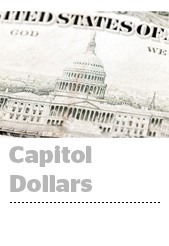 In a bizarre, unruly year for political advertising, an analysis of 2016 campaign, party and super PAC spending does reveal one consistent theme: the rise of targetable media.
In a bizarre, unruly year for political advertising, an analysis of 2016 campaign, party and super PAC spending does reveal one consistent theme: the rise of targetable media.
“It turned the page on what will happen in political spending moving forward, because targeted marketing absolutely replaced mass media,” said Kip Cassino, the executive VP of research at Borrell Associates and principle author of a 2016 political advertising report released Monday.
Total political advertising went from about $9.4 billion in 2012 to more than $9.8 billion this year – a relatively unimpressive $400 million jump after the multibillion dollar gains made in 2012. Borrell forecasts total spending in 2020 to rise another $400 million to $10.2 billion.
The four categories that saw an increase in spending compared to the 2012 election – digital, cable TV, direct mail and telemarketing – are the media channels where voter data can be best applied to media buys; digital, the most data-driven channel, was the big winner. Magazines, newspapers, out-of-home, radio and broadcast TV saw fewer overall budgets than in 2012.
Since the 2004 election, the amount spent per eligible voter – a political formula akin to the brand cost-per-acquisition metric – rocketed from between $20.01 and $28.17 in 2008 to $40.59 in 2012. But in 2016, spend per eligible voter only inched up to $40.87.
Cassino expects the amount spent per voter to remain flat in 2020, but he sees reason for optimism – as long as you’re in digital.
“This was a big year for programmatic, and there’s good reason to think that’s going to remain the case moving forward,” Cassino said.
Broadcast TV was the single biggest advertising channel for political advertising last year and is expected to retain the title in 2020, but it lost about $1 billion worth of market share, essentially ceding those budgets to digital, though cable grew the TV pie by almost half a billion dollars. Borrell forecasts another $1 billion loss for broadcast in 2020, with digital adding more than $1.4 billion.
“Gone are the days when someone thought they’d have to hit every house in a neighborhood to get the handful they needed,” Cassino said. “Campaigns will have a much clearer sense of which few messages they want a potential voter to receive, and who they think they’ve lost and won’t be interested in at all.”
Programmatic also emerged as an unstable variable in the political spending equation. Some of the questions that Cassino’s team felt most uncertain about, such as the role of social apps in future elections or how programmatic buying would upset the established political media and agency landscape, involve technology that’s difficult to forecast with much confidence.
“What we can say is there’s every reason to believe programmatic is going to be the driver of political spending,” Cassino said.
AdExchanger Daily
Get our editors’ roundup delivered to your inbox every weekday.
Daily Roundup
And 2017 will be an indicator of digital durability. After political buyers spent a measly $18 million on digital in 2013 – the first year of the last cycle – Borrell expects $480 million in political digital advertising this year.
“We know the money’s going to be available,” Cassino said, pointing to energy-related advocacy groups and others with big outreach plans as well as Senate battleground matchups receiving unprecedented early attention. “And I don’t think money’s going to be floating without digital players getting their hands on it.”













